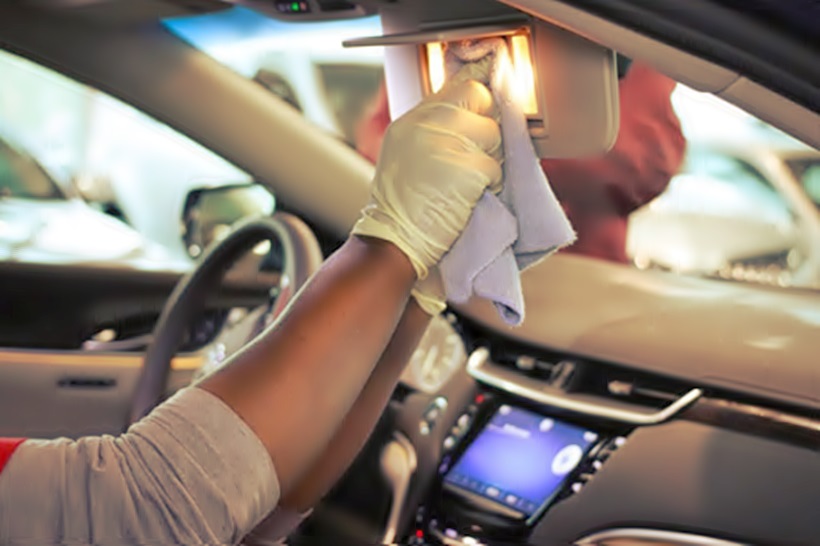Tue 07 April 2020:
In a global pandemic like the current coronavirus situation, our cars are a bit like microbial prisons. All the worst stuff from everywhere in the outside world gets dragged in and stays. All the good stuff follows us in, too, but that subtle whiff of pine on Uncle Fred’s jacket is far less consequential than COVID-19.
Luckily, keeping your car clean isn’t all that complicated. The most effective weapon against COVID-19 is soap (for seats and dashboards, of course). It doesn’t need to be antibacterial.
You’re driving a car that someone else was in or maybe you’re just nervous someone coughed on your bike’s handlebars.
There’s never been a better time to be a hygienic commuter, and even if you’ve run out of disinfectant you can still keep your scooter, bike and car coronavirus-free.
When cleaning, wear disposable gloves. And be sure to pay special attention to door handles, steering wheel, shifter, seatbelt buckles, and other surfaces you touch the most.
Here’s how:
Pretty much any household soap will do. Even that frou-frou decorative bar with the ribbon around it probably has the right stuff in it. Soap interacts with viruses in much the same way it does oils: it breaks them down.
So a simple soap scrub will annihilate any viruses in your car, and soap is unlikely to degrade your interior surfaces the way many cleaners can.
But that business about scrubbing your hands for 20 seconds applies here, too. You can’t just move some soap around and then rinse it off. Soap needs time to surround and break down the virus.
First, get a cloth and lather up some soap or normal washing-up liquid. You’re better off avoiding anything with aggressive ingredients like alcohol or bleach. Otherwise, there’s a risk you’ll damage the materials.
If you’re worried about ruining your interior fabric, first test it out on a spot in a hidden corner and see if it leaves a mark.
Gently wipe down all surfaces that may have been touched (or – heavens forbid – sneezed or coughed on) with a clean cloth moistened with some of the lather.
Leave it a moment to settle in, then wipe it all off again.
What about the screen? you ask. Your instinct is correct: It’s not a good idea to be splashing water all over your infotainment system or even the steering wheel (there are plenty of electronics in those today), and bleach solutions are obviously not a good idea for interior fabrics and materials.
Automakers including Toyota and Volkswagen recommend against using solvents or alcohol-based products on touchscreens. You can use a bleach-free wipe on a touchscreen, occasionally, but a better strategy is to keep the fingers clean that are going to touch the touchscreen.
This comprehensive list from the Environmental Protection Agency names cleaners that are effective against the virus, and it includes plenty of bleach-free sprays and wipes.
As always with a car interior, be sure to test the product in an inconspicuous area in case of unforeseen discoloration. And if you have a leather interior, be aware that many cleaning products can dry out the leather. After cleaning and drying, you should make a second pass over any leather surfaces with a leather conditioner to avoid cracking.
And most important, if you’re showing any symptoms of having contracted coronavirus, get the necessary treatment; see CDC’s website for the latest information.
Make sure to regularly clean your car’s steering wheel, gear shift, sun visor, dashboard, touchscreen and any other buttons, switches or controls for things like the radio, air conditioning or windscreen wipers.
Any mechanic will wince at the thought of you getting moisture into the sensitive electronics inside the car’s devices, so make sure the cloth is just damp, not wet.
You might think a quick polish of your bike’s handlebars is enough, but you’ll also want to rub down the brake and gear shift levers, as well as your lock.
If you cycle an electric bike, you should also clean the on-board computer and control unit, but again be careful not to allow moisture to get inside it.
While there are no known cases of a person contracting the coronavirus from touching a surface, the World Health Organization (WHO) has pointed to preliminary studies suggesting that the novel coronavirus may persist on surfaces for a few hours or even days.
Think your friends would be interested? Share this story!





